Henry Martyn Leland was Detroit’s “Master of Precision.” Trained in the armories of Hartford and Springfield, he went to work for Brown & Sharpe in Providence and perfected equipment for accurately grinding surfaces. Brown & Sharpe then sent him to Detroit to sell machine tools and precision measuring instruments and gauges to the industrial companies then rapidly growing there. Leland eventually formed Leland & Faulconer, Inc. as an independent machine shop and assembler. It built engines for Ransom Olds’ Oldsmobile, among other projects. Leland was hired by the directors of the Henry Ford Company to appraise its machinery when the board and Henry Ford got into a dispute. The directors wanted to build big, expensive, luxury cars to sell to a small but very wealthy market. Henry had an idea about building something strong, light and simple that could be sold for a very low price to a very large market. Leland did his appraisal, then showed the directors an engine he had designed. They let Ford go (with $900 and the drawings for his inexpensive car), hired Leland and renamed the company Cadillac which eventually became part of William Crapo Durant’s General Motors. A few years later Leland wanted to convert Cadillac’s production facilities to build Liberty aircraft engines for World War I. Durant refused so Leland left to set up a new company named for one of his idols, Lincoln, and take up the war effort. After the war Lincoln had facilities but no product so Leland and his son Wilfred went back into the automobile business. Leland’s first Lincoln was superbly engineered and built. Introduced in 1921, it was powered by a 358 cubic inch L-head 60° V-8 engine. Unlike more conventional V-engines which offset the cylinder banks slightly to make room for adjacent connecting rod bearings on the crank journals, Leland’s Model L used expensive, precision made fork-and-blade connecting rods and disposed the cylinders directly opposite each other. Unusually for the period, Leland’s V8 had full pressure lubrication. Leland, however, had an engineer’s vision and the bodies which completed his automobiles left a lot to be desired. Lincoln tried a quick redesign with a set of twelve body designs by Hermann A. Brunn but it was too late as dismal sales, the post WWI recession and an erroneous $4½ million tax bill spelled the end of Lincoln. It was bought out of receivership in 1922 by none other than Henry Ford to balance the success of the bare bones Model T with the best-engineered and best-built luxury automobile in America. Ford put his son Edsel, who had an innate sense of style, grace, balance and proportion, in charge of Lincoln and the automobiles soon began to reflect Edsel’s vision. The Paine Collection’s 1923 Lincoln Model L (the “L” indicated its design by Henry and Wilfred Leland and would remain the catalog designation until the V-8 was superseded in 1931, a measure of even the Fords’ respect for the “Master of Precision”) reflects the beginning of Edsel Ford’s influence on Lincoln design. The long hood, continuous beltline accent, subtly defined passenger compartment edges and body sides that curve in to join the frame cover all convey a tight, integrated sense of purpose and performance that perfectly suited the Leland-designed chassis and drivetrain. Finished in maroon with black fenders, dark brown leather upholstery and black leatherette top, this car has black Rudge-Whitworth centerlock wire wheels and black sidewall tires that convey an elegant, no-nonsense demeanor that is appropriate for an expensive, luxury automobile delivered in the wake of the post World War I economic difficulties. It is modestly but effectively equipped with a folding steering wheel, jump seats, folding rear compartment footrest and an intermediate cowl with locking storage compartments. There is an absolute minimum of brightwork; in fact the only bright trim are the nickel plated Bausch & Lomb drum headlights, the hubcaps and the greyhound radiat
Henry Martyn Leland was Detroit’s “Master of Precision.” Trained in the armories of Hartford and Springfield, he went to work for Brown & Sharpe in Providence and perfected equipment for accurately grinding surfaces. Brown & Sharpe then sent him to Detroit to sell machine tools and precision measuring instruments and gauges to the industrial companies then rapidly growing there. Leland eventually formed Leland & Faulconer, Inc. as an independent machine shop and assembler. It built engines for Ransom Olds’ Oldsmobile, among other projects. Leland was hired by the directors of the Henry Ford Company to appraise its machinery when the board and Henry Ford got into a dispute. The directors wanted to build big, expensive, luxury cars to sell to a small but very wealthy market. Henry had an idea about building something strong, light and simple that could be sold for a very low price to a very large market. Leland did his appraisal, then showed the directors an engine he had designed. They let Ford go (with $900 and the drawings for his inexpensive car), hired Leland and renamed the company Cadillac which eventually became part of William Crapo Durant’s General Motors. A few years later Leland wanted to convert Cadillac’s production facilities to build Liberty aircraft engines for World War I. Durant refused so Leland left to set up a new company named for one of his idols, Lincoln, and take up the war effort. After the war Lincoln had facilities but no product so Leland and his son Wilfred went back into the automobile business. Leland’s first Lincoln was superbly engineered and built. Introduced in 1921, it was powered by a 358 cubic inch L-head 60° V-8 engine. Unlike more conventional V-engines which offset the cylinder banks slightly to make room for adjacent connecting rod bearings on the crank journals, Leland’s Model L used expensive, precision made fork-and-blade connecting rods and disposed the cylinders directly opposite each other. Unusually for the period, Leland’s V8 had full pressure lubrication. Leland, however, had an engineer’s vision and the bodies which completed his automobiles left a lot to be desired. Lincoln tried a quick redesign with a set of twelve body designs by Hermann A. Brunn but it was too late as dismal sales, the post WWI recession and an erroneous $4½ million tax bill spelled the end of Lincoln. It was bought out of receivership in 1922 by none other than Henry Ford to balance the success of the bare bones Model T with the best-engineered and best-built luxury automobile in America. Ford put his son Edsel, who had an innate sense of style, grace, balance and proportion, in charge of Lincoln and the automobiles soon began to reflect Edsel’s vision. The Paine Collection’s 1923 Lincoln Model L (the “L” indicated its design by Henry and Wilfred Leland and would remain the catalog designation until the V-8 was superseded in 1931, a measure of even the Fords’ respect for the “Master of Precision”) reflects the beginning of Edsel Ford’s influence on Lincoln design. The long hood, continuous beltline accent, subtly defined passenger compartment edges and body sides that curve in to join the frame cover all convey a tight, integrated sense of purpose and performance that perfectly suited the Leland-designed chassis and drivetrain. Finished in maroon with black fenders, dark brown leather upholstery and black leatherette top, this car has black Rudge-Whitworth centerlock wire wheels and black sidewall tires that convey an elegant, no-nonsense demeanor that is appropriate for an expensive, luxury automobile delivered in the wake of the post World War I economic difficulties. It is modestly but effectively equipped with a folding steering wheel, jump seats, folding rear compartment footrest and an intermediate cowl with locking storage compartments. There is an absolute minimum of brightwork; in fact the only bright trim are the nickel plated Bausch & Lomb drum headlights, the hubcaps and the greyhound radiat
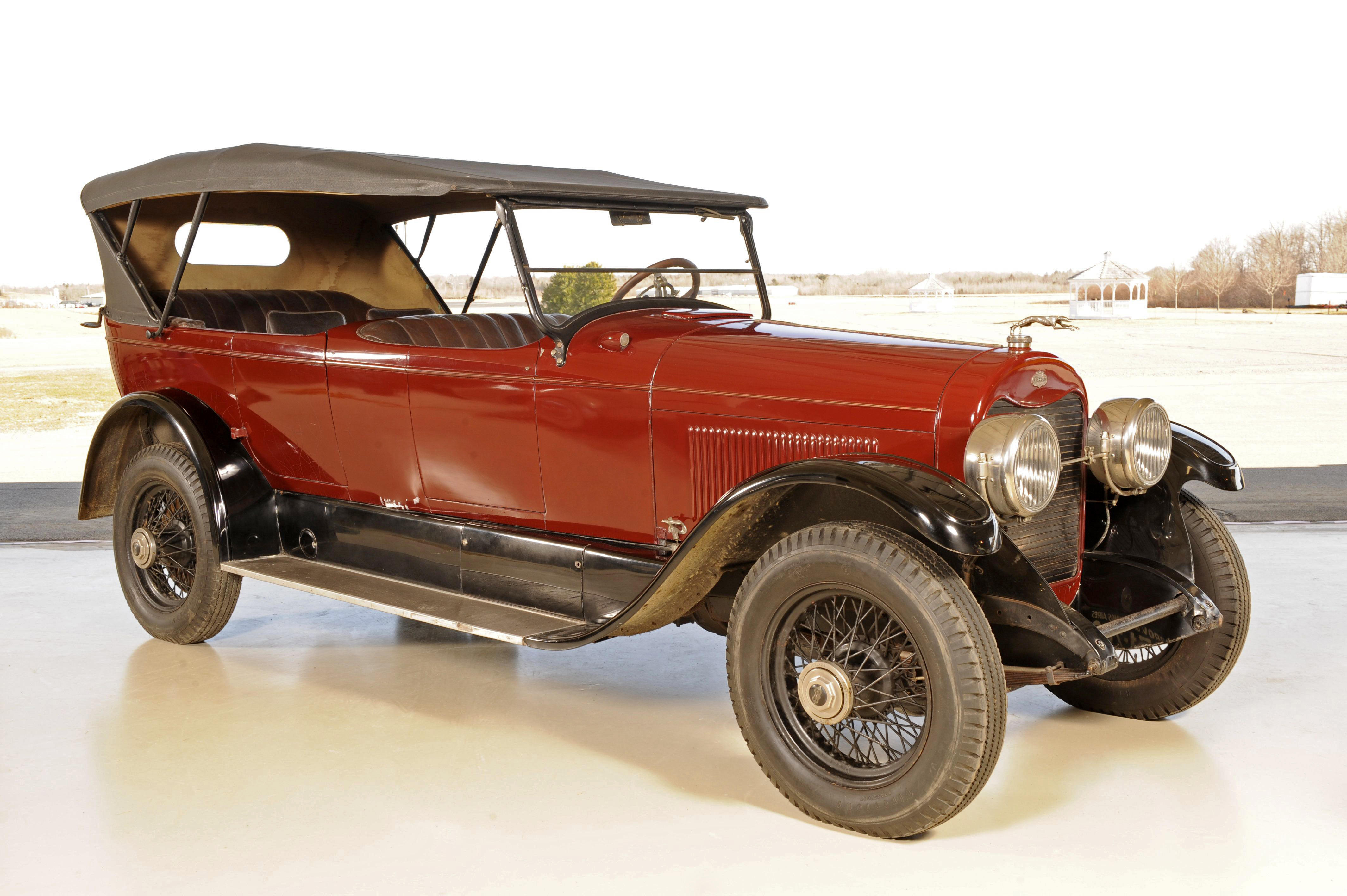
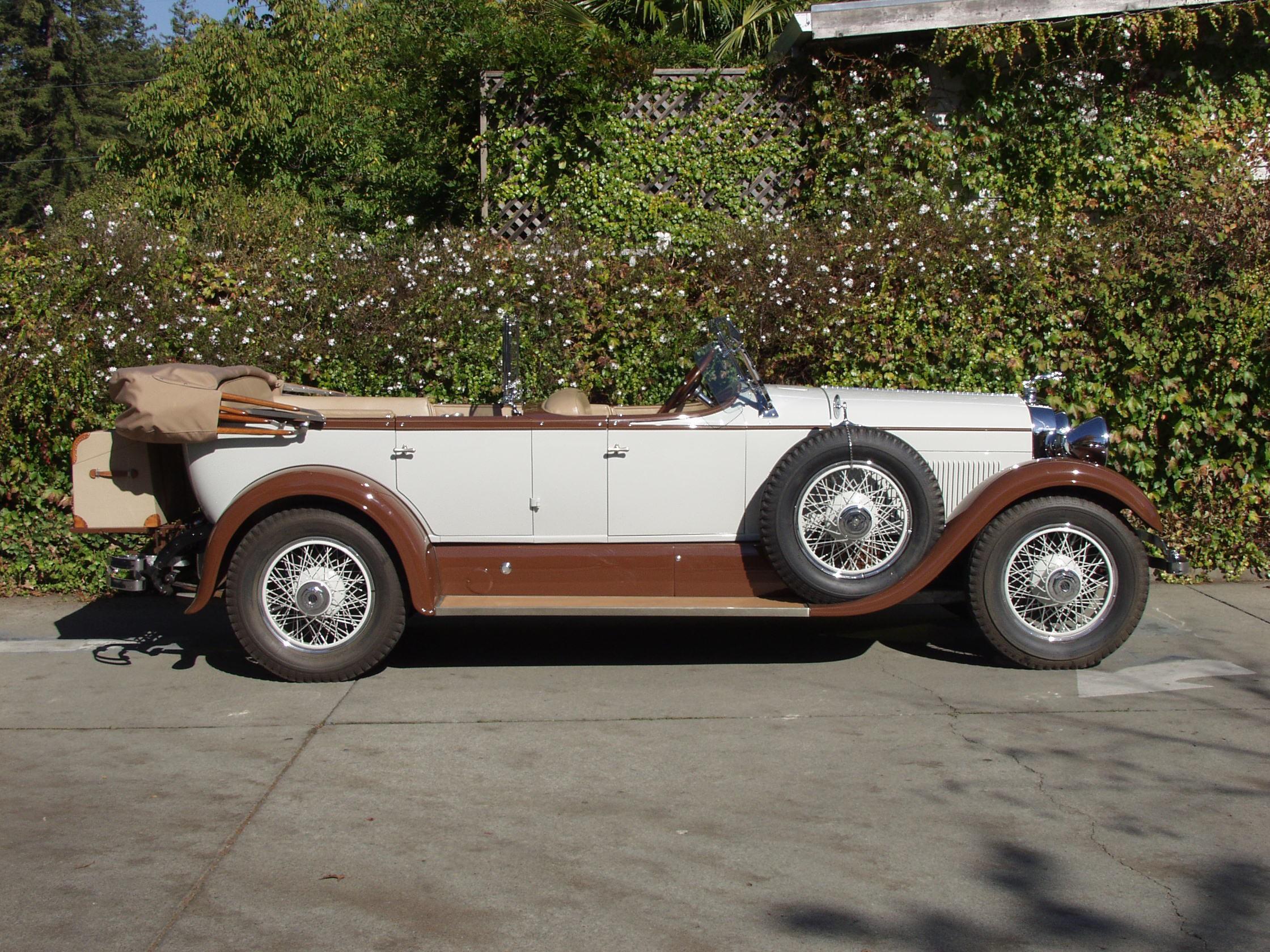
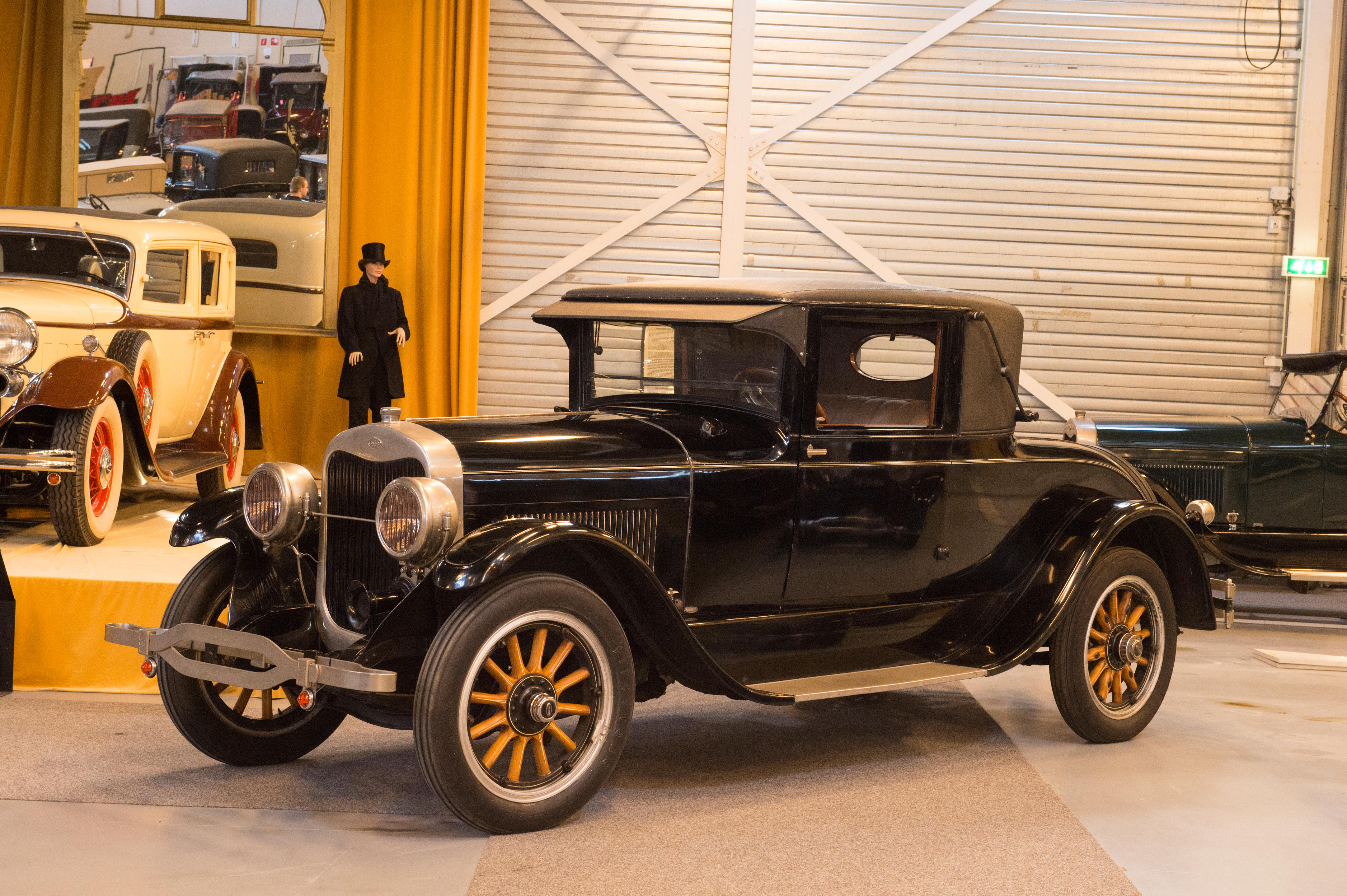
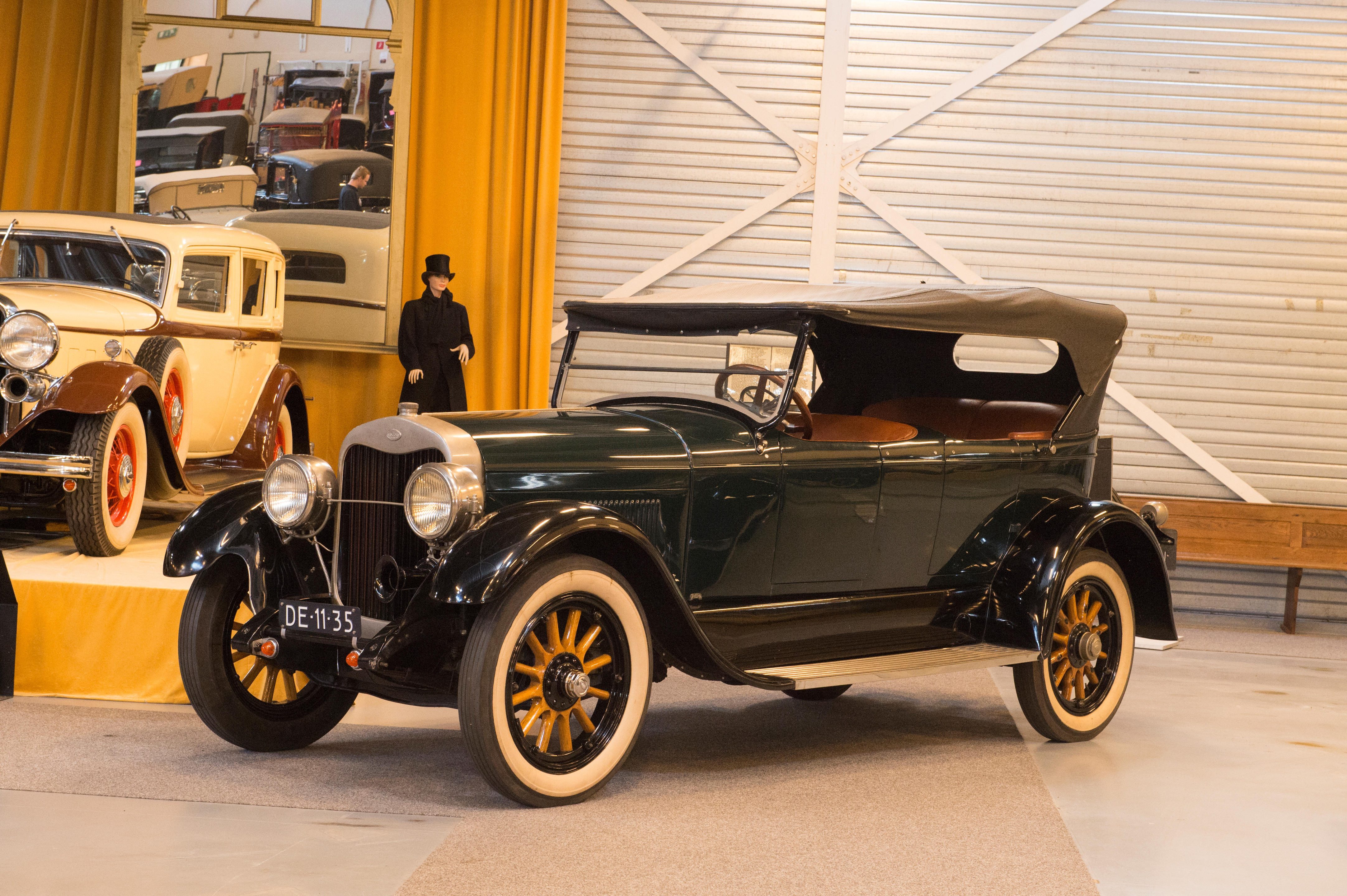
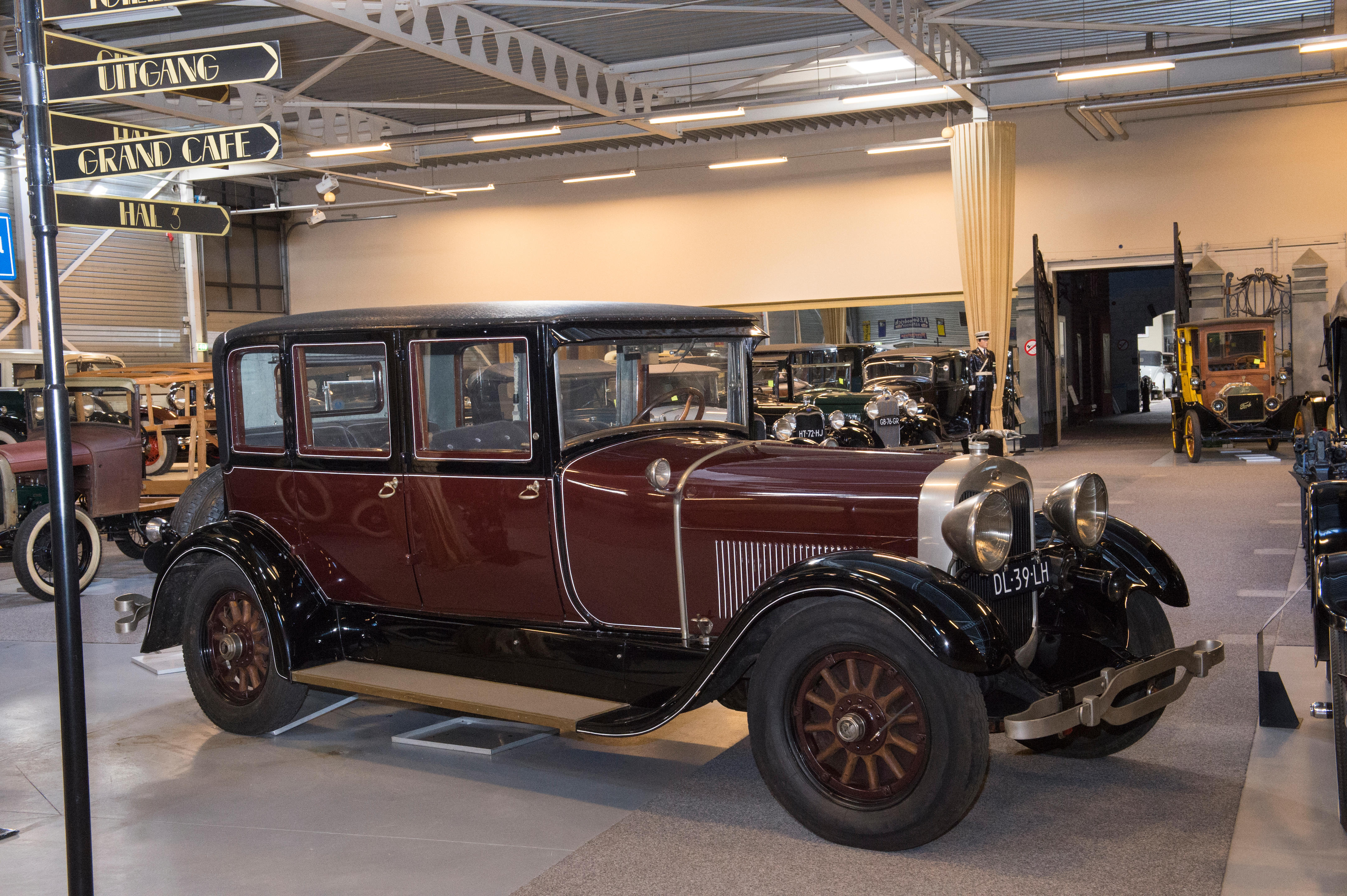

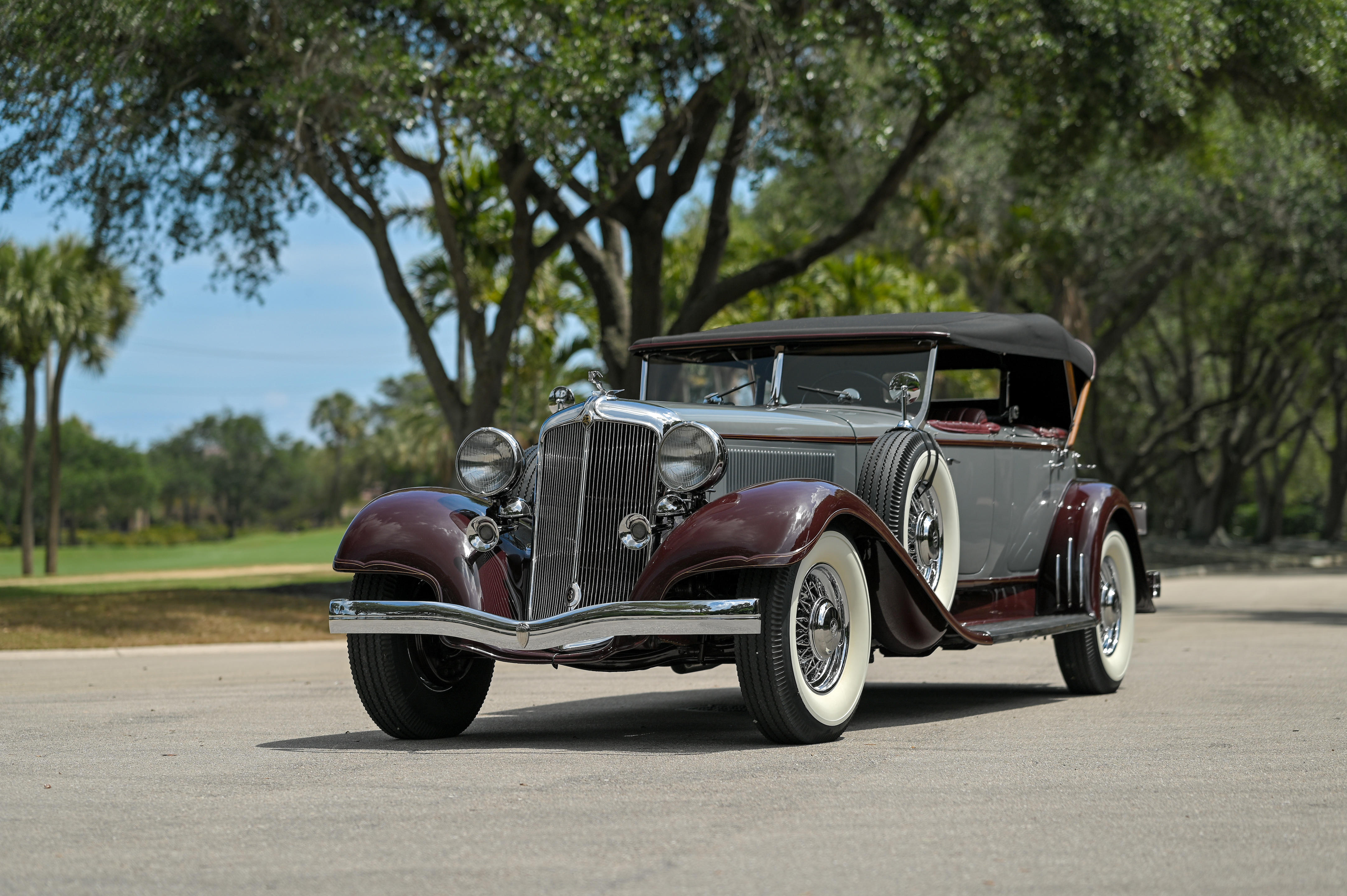

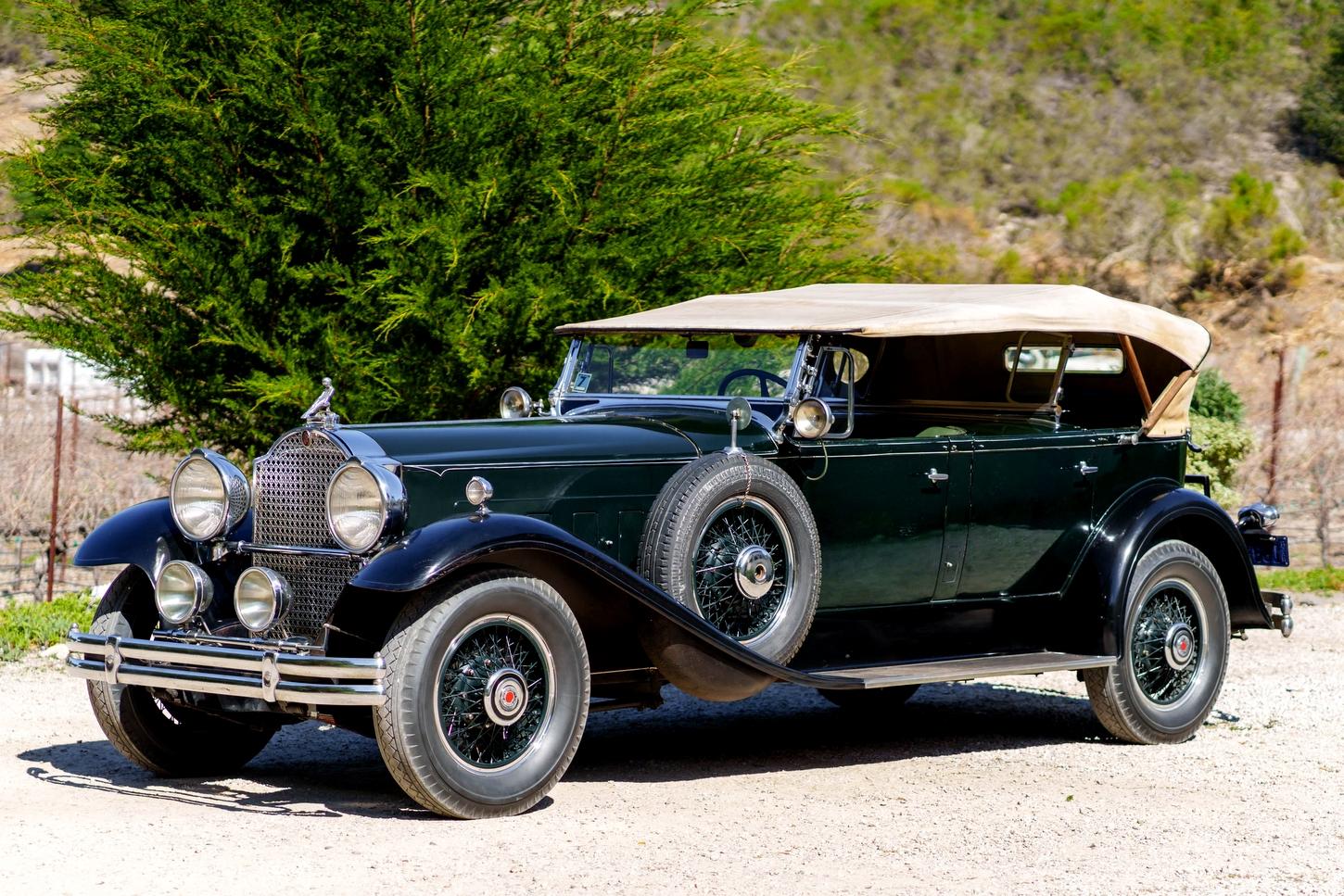
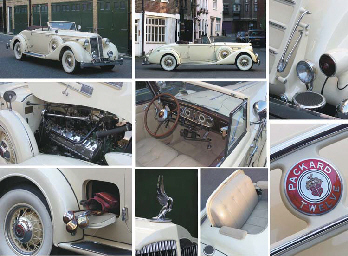

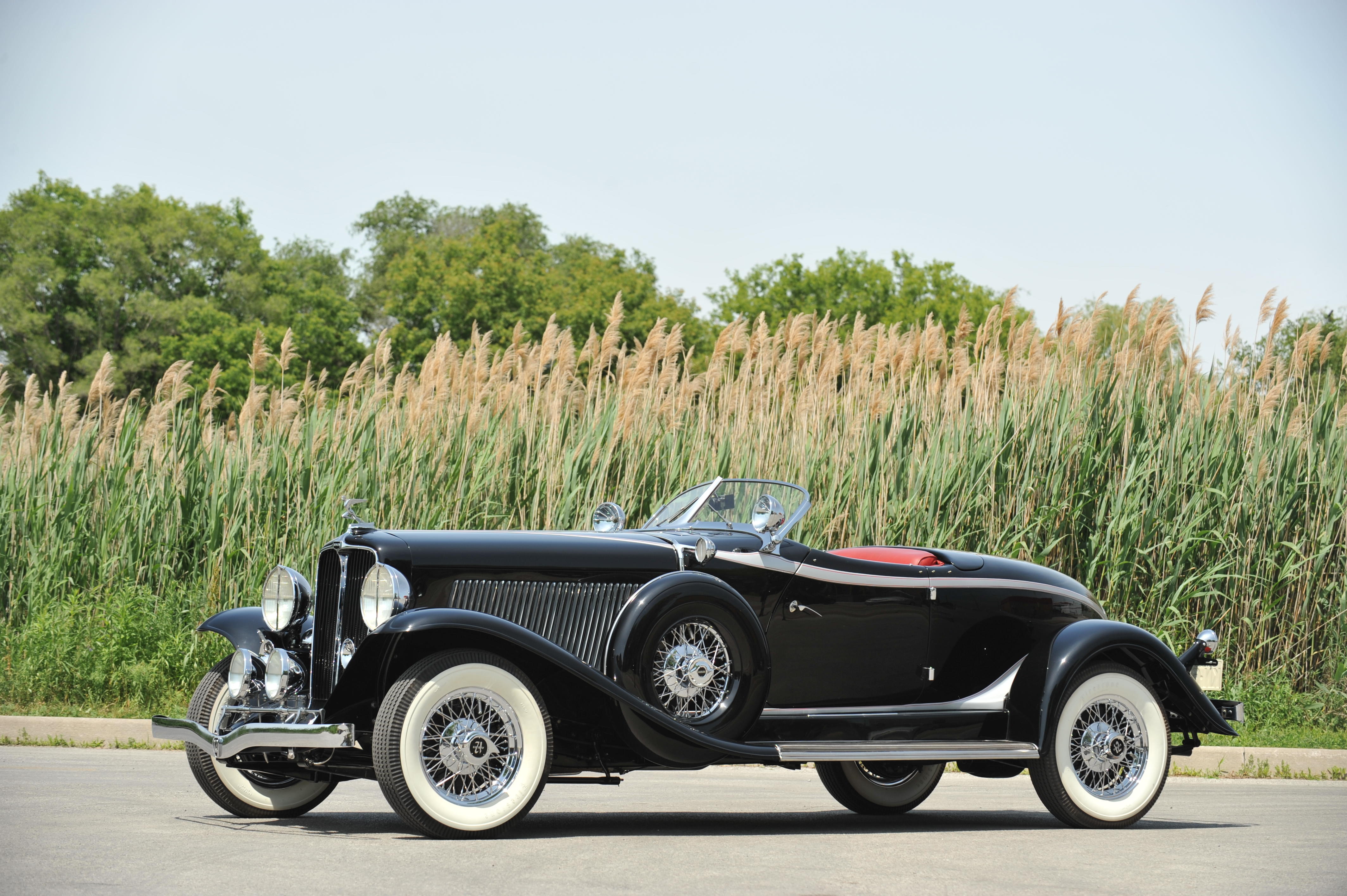
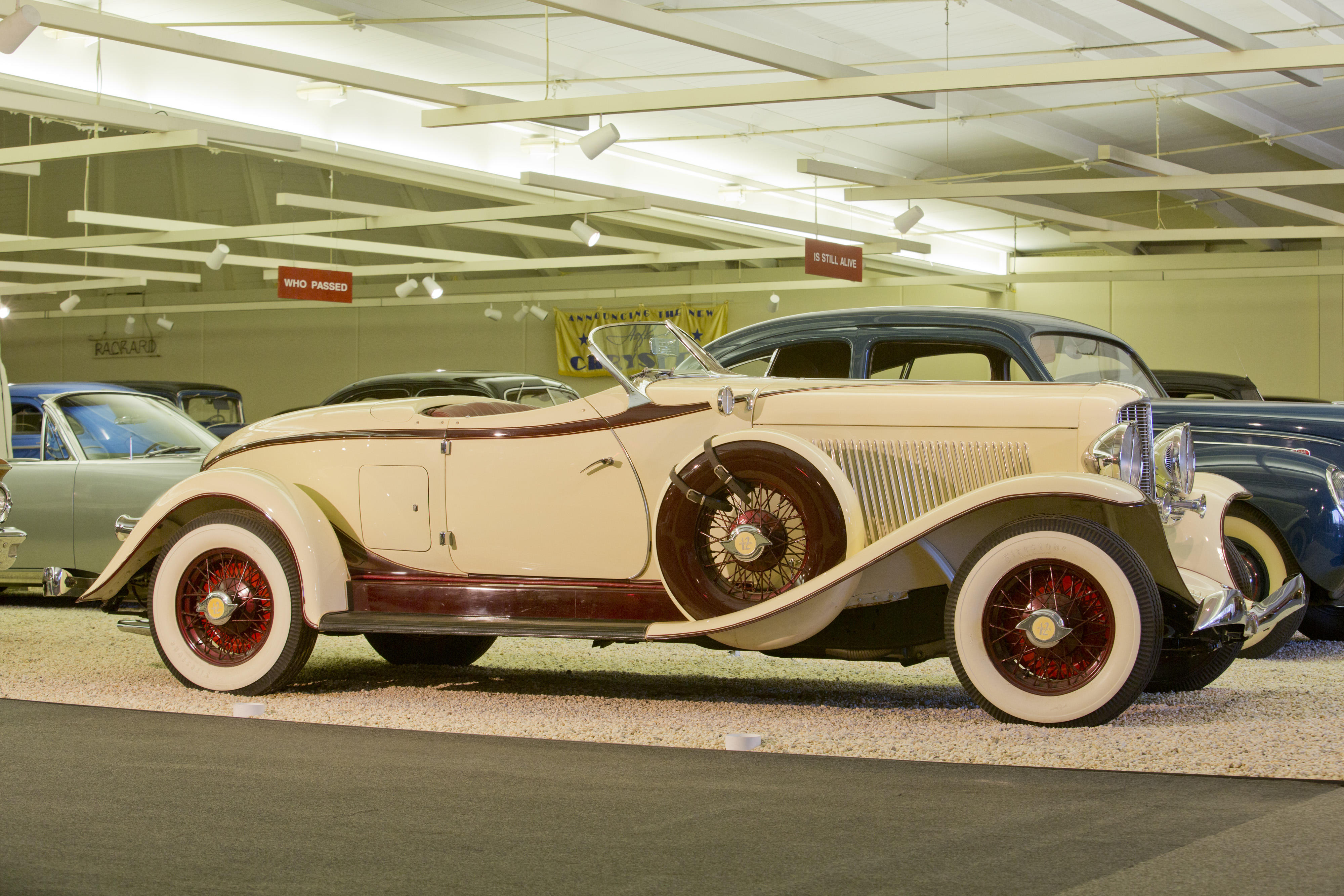
Try LotSearch and its premium features for 7 days - without any costs!
Be notified automatically about new items in upcoming auctions.
Create an alert